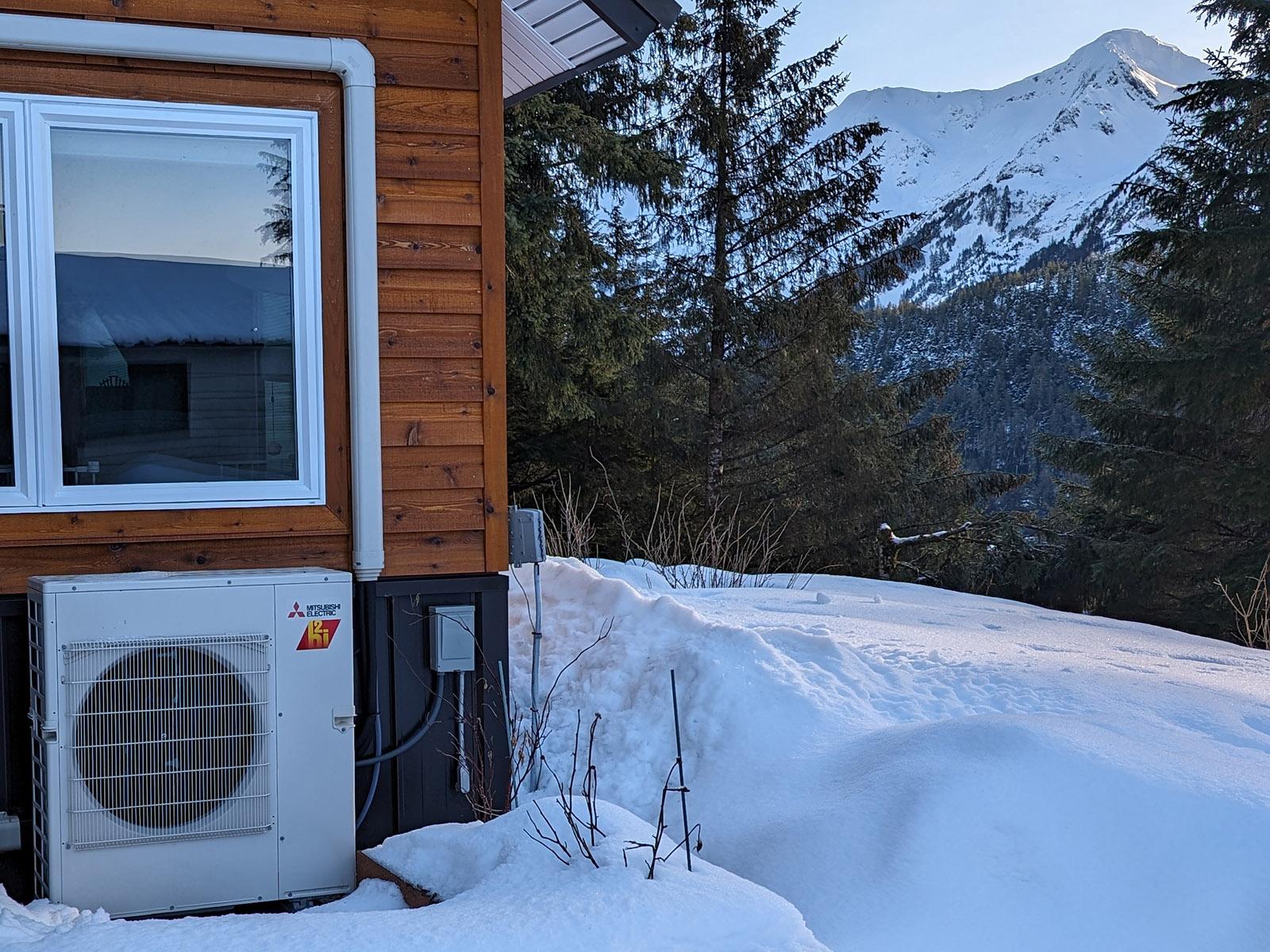Post Views:
249
By Tim Ledbetter
It’s rural. It’s cold. It’s remote.
It’s perfect.
There may be few better real-life laboratories in the United States than Cordova, Alaska, to evaluate the challenges and benefits of transitioning to new, cleaner methods of home heating in a colder climate.
Researchers at Pacific Northwest National Laboratory (PNNL) have been conducting a project in the community for the past year, focused on “electrification”—in this case, transitioning oil-based home heating units to electric heat pumps that operate without the need for interior air ducts. Deployed nationwide, this type of electrification can help America meet goals to reduce carbon emissions through use of clean energy sources.
The project has shown there’s not only significant interest from Cordova homeowners in switching to electricity for heating, but that it’s possible to balance existing electrical power grid resources and new demand. The effort also has identified lessons learned that may help other remote communities moving toward electrification.
Along with the practical and technical aspects of the project, there’s an equity component. The Department of Energy’s Building Technologies Office, which funds the project, seeks to improve the efficiency of the nation’s homes and buildings in a just and equitable manner that benefits all sectors of American society.
“Justice and equity include working with communities that experience roadblocks in adopting new technology, and perhaps don’t generally receive the same type of services as the rest of the country,” notes PNNL’s Sam Rosenberg, the project’s lead scientist. “Our work will help reduce barriers and provide a better understanding of the realities and needs of these areas.”
Project puts theories to the test
Cordova, a coastal community of approximately 2,600 people located about 150 miles southeast of Anchorage, is accessible only by air and water. Local homes typically rely on fuel-oil-fired furnaces for heat. The oil is delivered to the community via ocean tankers, which serve an important need, but also evoke memories of a damaging 1989 oil spill in the region. In some homes, wood stoves serve as backup heat. The community’s electrical power source essentially is a self-contained “microgrid” with all electricity generated locally and no power lines connecting Cordova to a larger supply.
To date, the PNNL-led project has coordinated heat pump installations in three homes in the community, at no cost to owners, with additional installations planned. The units have performed capably, as researchers expected. Rosenberg said one resident planned to use the heat pump during more moderate parts of the year, but instead employed it all winter long, entirely forgoing use of a diesel-powered boiler.
“We know that Cordova is a key test case that can inform many other electrification efforts in rural, cold communities across the nation,” Rosenberg said. “We need to answer a range of questions to achieve broader electrification in the United States, including how electric heat pumps can be operated effectively in colder areas where electricity availability may be constrained.”
A central tenet of the Cordova project has been evaluating “demand response” concepts. Demand response involves automatic communication between heat pumps and the power grid to coordinate electricity consumption in a way that assures there’s plenty of power for everyone, while providing desired levels of home comfort. In any community, as more electric devices come online, this methodology becomes increasingly important.
“Our project has shown that new demand response and communications methods can work. Further, we’ve employed an array of demand response methods that have been used for additional data collection this winter,” Rosenberg said.
Clay Koplin, chief executive officer of Cordova Electric Cooperative, supplier of electricity to the community, began envisioning electrification strategies many years ago, and now he’s living part of that vision.
“As a small, remote microgrid, we spill excess hydropower at times, and at other times we have to supplement generation with expensive diesel fuel. I have been considering demand response and dispatchability for over two decades,” Koplin said. Dispatchability refers to quickly adjusting power generation based on market need.
“I have also been monitoring ground source heat pump technology for over 30 years, but it is a much more expensive alternative than the newer air source heat pumps deployed by PNNL, which I realized immediately could add value as a demand response asset,” he added.
Unique factors at play in Cordova
Some might ask why only three heat pumps have been installed over the past year. Researchers wanted more installed, and the electrical cooperative and many homeowners remain excited about the prospect of electrification. But there have been complications.
Early on, Rosenberg found that the community’s sole heating, ventilation, and air-conditioning firm, Copper Highway Heating, did not have the bandwidth to add installation of residential heat pumps. After discussions between Rosenberg and the owner, the company agreed to provide installation services, and obtained the necessary training and certification.
The next challenge involved getting heat pumps to Cordova. Supply chain issues in 2022 delayed equipment arrivals by several months.
“The various installation, distribution, and design issues we ran into are representative of the types of challenges we will see in other parts of the country. It’s vital information to know going forward, and it could make future electrification efforts easier,” Rosenberg said.
In addition to Rosenberg, staff working on the project include researchers Chitra Nambiar and Alex Vlachokostas and project managers Abinesh Selvacanabady and Cheryn Metzger.




